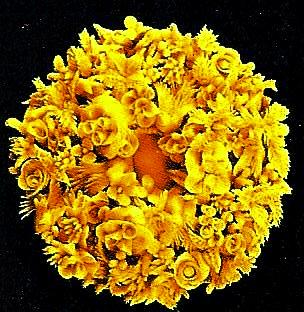Food
Homemade loaves of fragrant Easter bread central part of religious celebration
LONDON, Ont.—Easter would hardly be Easter for many families of European heritage without the centuries-old tradition of rich, often sweet and ornate loaves of homemade Easter bread.
Lovella Schellenberg of Abbotsford, B.C., founder of the Mennonite Girls Can Cook recipe-sharing blog, says when her sons were young, they started clamouring for her paska right after Valentine’s Day. They’re adults now with families of their own, but she still keeps them supplied with the special bread, but only in March and April.
“I make sure the families all have their fill and then we don’t make it any more until next Easter.”
It was the online response to the paska recipe in her personal blog that led to the establishment of the Mennonite Girls Can Cook website (www.mennonitegirlscancook.ca) which has a core of 10 contributors, nine Canadian Mennonite women of Ukrainian background, including Schellenberg, and one Seattle woman of Russian descent. It has also resulted in two cookbooks.
Schellenberg’s recipe is a modified version of one from her husband’s grandmother, a sweet dough with lots of egg, sugar, citrus flavouring, icing and sprinkles on top. It’s “citrusy and moist and so soft,” she says.
Traditionally it is baked in a tall tin, making a cylindrical loaf.
“Her recipe was a painstaking, long process. So I took it and I basically made it modern and used a blender and have made it quite simple.”
Doug Avram, a recently retired minister from Aylmer, Ont., is of Romanian descent and an avid bread-maker. He says his mother and grandmother always made bread, but for Easter “the breads were different.”
His pascha recipe almost identical to his grandmother’s contains rum and raisins, has a braided top and a centre well with a sweetened cheese filling.
“Growing up in Timmins (Ont.) in that culture of orthodox Easter rites, the whole community would meet at Easter in the community hall and have a celebration supper or luncheon,” Avram says.
“The breads and the Easter eggs, they were like a display thing. People would make bread and donate it as part of the banquet and they’d take pride in how pretty it looked.”
Laura D’Amelio of Pickering, Ont., says some variations of Italian Easter bread _ pane di pasqua _ are sweet, but the one made by her family is not. When her parents emigrated from southern Italy, “times were tough” and sugar was at a premium, says D’Amelio.
What makes her Easter bread special is its construction or “presentation.” The plain dough is twisted in a wreath or in a “doll” shape around one or several whole raw eggs, still in the shell, which bake in the oven along with the bread.
In some traditions, the egg shells are dyed brilliant colours before baking, but D’Amelio says the dye tends to bleed into the bread. Her family uses plain white or brown chicken eggs or naturally coloured greenish duck eggs. When baked, the hard eggs take on some of the flavour of the yeasty bread. Usually they are shelled and eaten at the same time as the bread.
The smaller doll-shaped bread, a two-layer thick twisted dough with the egg as the head and the ends of the twists as the feet, is said to represent the baby Jesus and is often made as a gift for children.
Generally the bread would be made this way and served only in the week leading up to Easter.
“We absolutely had it at Easter lunch or supper on Easter Sunday. It was a must,” says D’Amelio, author of the food blog An Italian-Canadian Life (www.anitaliancanadianlife.ca).
The similarity in the names of the breads paska, pascha and pasqua is because all three words mean Easter.
Each of the cooks says their recipes have regional variations within their countries of origin, but in all cases, Easter bread is a central part of the religious holiday.
The most common British version of Easter bread is hot cross buns lightly spiced buns often made with candied fruit and with a symbolic cross on the top, usually served on Good Friday. The traditional way to make the cross was with short-crust pastry, but now the cross is often cut into the dough and then piped with icing after the cooked buns have cooled.
These buns have a long and storied history. In the late 1500s, their sale was forbidden except for burials, Good Friday and Christmas. Folklore says buns made on Good Friday would not spoil for a year.
Making Easter bread requires time and commitment, the three cooks say fitting for a food used to mark their most important religious holiday of the year.
And although some sources suggest the breads are a “reward” for the dietary restrictions some people observe during Lent, the six-week period leading up to Easter, Schellenberg, Avram and D’Amelio say this does not apply in their traditions.
“Easter is a happy and joyous time,” Avram says, “and food, especially the breads, are a big part of it.
“Bread is a staple of life and Easter is a celebration of life.”
___
To contact Susan Greer, email her at susan.greer(at)rogers.com.






















